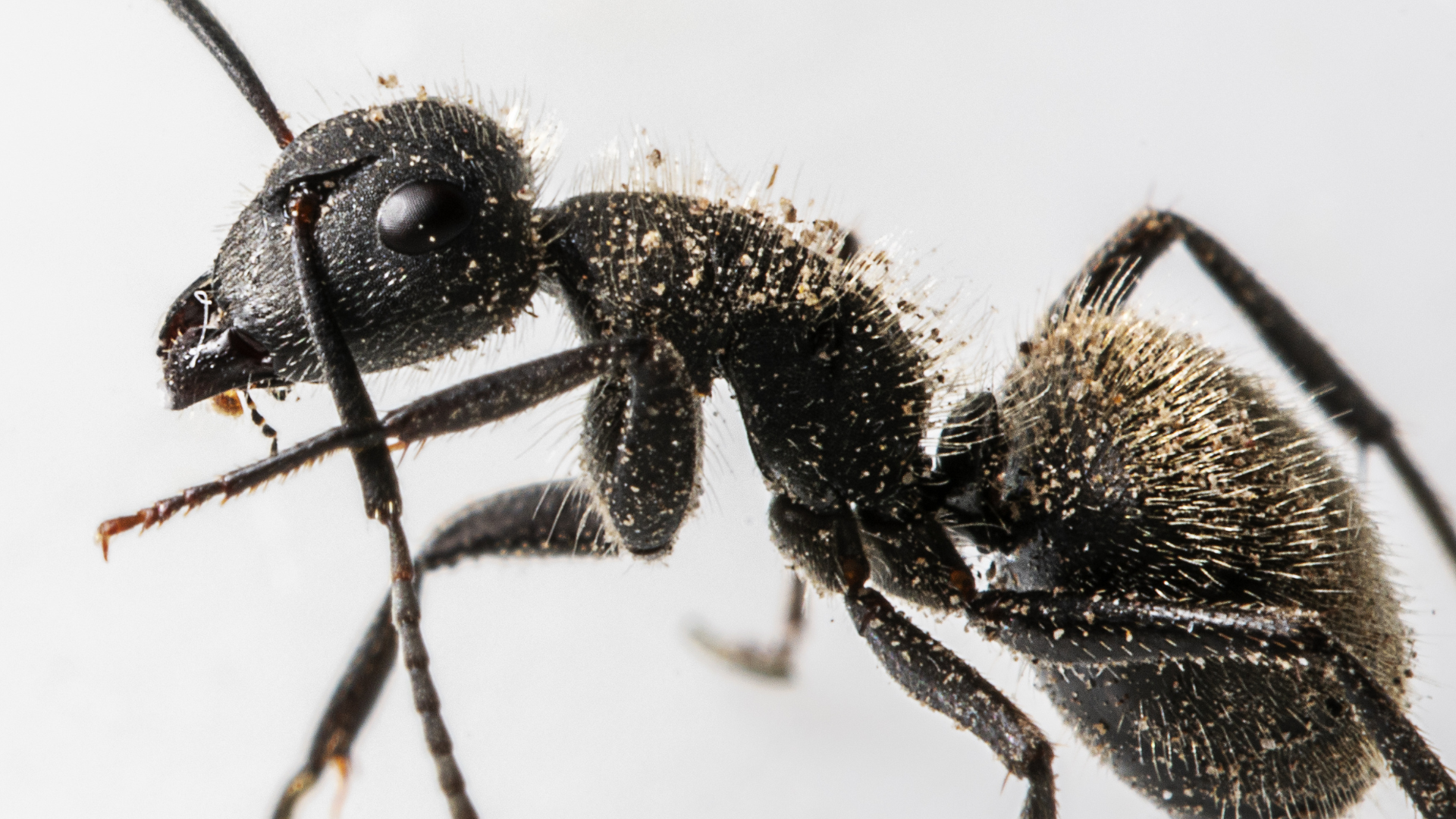
How to Get Rid of Ants Permanently in Your Home Fast
Picture this: You wake up to find a line of tiny black ants marching across your kitchen counter. You grab the spray bottle, eliminate the visible invaders, and wipe down the surface. Success, right? Wrong. Within hours, they’re back – and often in greater numbers.
If this scenario sounds familiar, you’re not alone. Over 80% of homeowners who attempt DIY ant control find themselves in an endless cycle of temporary fixes and recurring infestations. The frustrating truth? Most people are fighting the symptoms, not the source.
As licensed pest control professionals with years of experience eliminating ant infestations, we’ve seen every method imaginable – from household remedies to commercial sprays. Here’s what we’ve learned: permanent ant elimination requires targeting the entire colony, not just the workers you see.
In this comprehensive guide, you’ll discover:
- Why 90% of DIY methods fail (and how to avoid these mistakes)
- Species-specific elimination strategies that professionals use
- Natural methods that actually work for long-term control
- Step-by-step prevention protocols to keep ants away permanently
- Realistic timelines for complete colony elimination
Need immediate professional help?
Call Clarity Pest Control at (469) 260-6337 for same-day service and guaranteed results.
Why Most Ant Control Methods Fail
The Colony Reality Most Homeowners Don't Understand
When you spot 10 ants in your kitchen, you’re not seeing the real problem. Those visible ants represent less than 5% of the actual colony. Hidden beneath your floorboards, inside wall voids, or under your foundation, thousands more ants are working, breeding, and preparing to replace any workers you eliminate.
Professional Insight: Homeowners often focus on killing individual ants, but that’s like trying to empty the ocean with a teaspoon. The colony can have 10,000 to 500,000 ants, depending on the species.
The 3 Critical Mistakes That Keep Ants Coming Back
Mistake #1: Using Repellent Sprays
Most commercial ant sprays contain repellent chemicals that actually scatter the colony rather than eliminate it. When ants detect these chemicals, they abandon their current trails, split into multiple smaller colonies, and establish new entry points.
Mistake #2: Killing Worker Ants on Contact
Worker ants are your key to reaching the queen and eliminating the entire colony. When you kill them immediately, you prevent poison transfer to the colony and miss the opportunity for colony-wide elimination.
Mistake #3: Ignoring the Root Causes
Surface cleaning without addressing attractants and entry points ensures ants will return. Common overlooked factors include microscopic food residues, moisture sources, and structural gaps smaller than a credit card.
Need Professional Help Right Now?
Don’t waste more time with methods that don’t work. Clarity Pest Control provides guaranteed ant elimination with same-day service.
Call 469-260-6337 for your free inspection Email: chris@claritypest.com
Critical Ant Species Identification
Different ant species require completely different elimination strategies. Misidentification is the primary reason DIY treatments fail. Here’s how to identify the most common indoor ant species and choose the most effective treatment approach.
Sugar Ants (Odorous House Ants)
| Identification Features | Details |
| Size | 1/16 to 1/8 inch (very small) |
| Color | Dark brown to black |
| Key Behavior | Strong sweet food preference |
| Damage Potential | Minimal (nuisance only) |
Quick ID Test: Crush one ant – if it smells like rotten coconut or blue cheese, you have odorous house ants.
Best Treatment Approach:
- Primary: Sweet-based liquid baits
- Timeline: 7-14 days for colony elimination
- Success Rate: 90%+ with proper bait placement
Carpenter Ants
Identification Features | Details |
Size | 1/4 to 1/2 inch (largest indoor ants) |
Color | Black, dark brown, or reddish |
Key Behavior | Active at night, attracted to moisture |
Damage Potential | HIGH – can weaken structures |
Warning Signs:
- Wood shavings (frass) near wooden structures
- Rustling sounds in walls during quiet hours
- Winged ants emerging from walls or ceilings
- Soft, hollow-sounding wood when tapped
Best Treatment Approach:
- Primary: Professional treatment recommended
- DIY Option: Protein-based baits + moisture elimination
- Timeline: 2-4 weeks (professional), 4-8 weeks (DIY)
Pavement Ants
Identification Features | Details |
Size | 1/8 inch |
Color | Dark brown to black |
Key Behavior | Nest under pavement, aggressive |
Damage Potential | Low (landscape disruption) |
Best Treatment Approach:
- Primary: Granular baits for outdoor colonies
- Secondary: Both sweet and protein baits indoors
- Timeline: 2-3 weeks for complete elimination
Little Black Ants
Identification Features | Details |
Size | 1/16 inch (extremely small) |
Color | Jet black |
Key Behavior | Form long, organized trails |
Damage Potential | Minimal |
Best Treatment Approach:
- Primary: Liquid bait stations
- Placement: Along established trails
- Timeline: 10-21 days (slower due to colony structure)
Professional Methods That Guarantee Results
Colony-Targeting Ant Baits: The Gold Standard
Professional ant baits are 85-95% effective because they exploit ants’ social behavior. Unlike sprays that kill on contact, baits turn worker ants into delivery systems that carry poison directly to the queen.
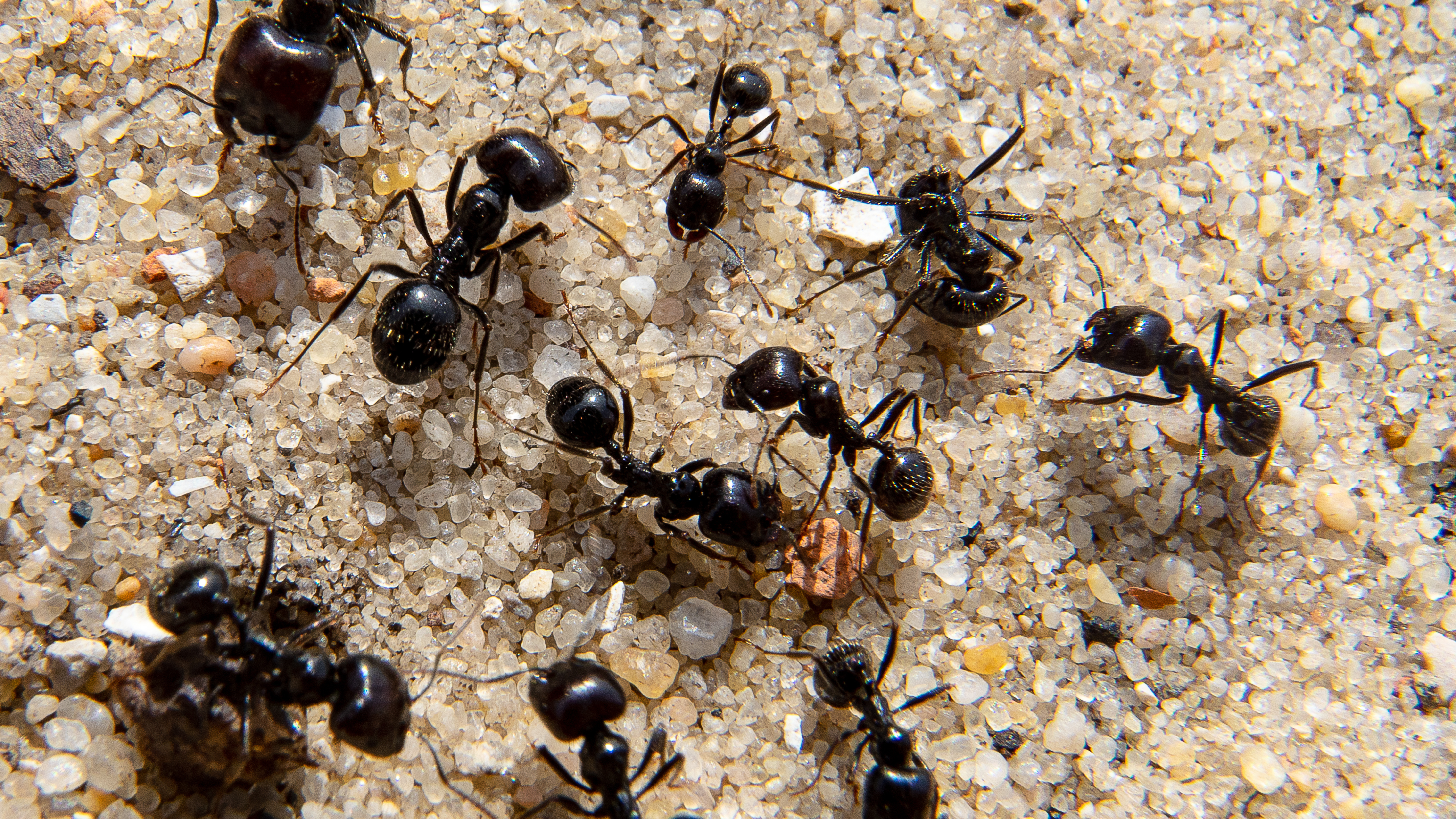
How Professional Baits Work:
Worker Ant → Finds Bait → Returns to Colony →
Feeds Queen & Larvae → Colony Collapse (7-14 days)
Types of Professional Baits:
Sweet Liquid Baits
- Best for: Sugar ants, pavement ants, little black ants
- Placement: Near trails, not directly on them
- Refill frequency: Every 2-3 months
Protein-Based Baits
- Best for: Carpenter ants, grease-preferring species
- Form: Gel or paste consistency
- Weather resistance: Better for outdoor use
Strategic Bait Placement: The Professional Secret
Common Placement Mistakes:
- Placing baits directly on ant trails
- Using too many bait stations
- Applying sprays around bait areas
Professional Placement Strategy:
- Entry points: 6-12 inches from trails
- Corner areas: Natural gathering spots
- Moisture sources: Around pipes and leaks
- Kitchen zones: Away from food prep surfaces
Natural DIY Solutions That Actually Work
While professional treatments offer the highest success rates, several natural methods can effectively eliminate smaller ant infestations when applied correctly.
Borax-Based Ant Baits: The Most Effective DIY Method
Success Rate: 70-80% for small to medium infestations
Timeline: 1-3 weeks for complete colony elimination
Professional-Strength Borax Bait Recipe:
Sweet Ant Bait (for sugar ants):
- 1 cup warm water
- 2 tablespoons borax (20 Mule Team brand)
- 2 tablespoons sugar
- Optional: 1 tablespoon honey for extra attraction
Protein Ant Bait (for carpenter ants):
- 3 tablespoons peanut butter
- 1 tablespoon borax
- 1 teaspoon vegetable oil
Critical Safety Warnings:
- Keep all borax baits away from children and pets
- Use food-grade borax only
- Wash hands thoroughly after handling
Food-Grade Diatomaceous Earth: The Natural Dehydrator
How it works: Microscopic particles damage ant exoskeletons, causing dehydration
Success Rate: 40-60% (better for prevention)
Safety Level: High (safe around children and pets when food-grade)
Application Method:
- Light dusting only – thick layers repel ants
- Apply when dry – moisture reduces effectiveness
- Target entry points and travel routes
- Reapply after rain or cleaning
Essential Oil Barriers: Natural Repellents
Most Effective Oils:
- Peppermint Oil: 10-20 drops per cup of water
- Tea Tree Oil: Natural antifungal properties
- Lemon Eucalyptus Oil: EPA-registered insect repellent
Reality Check: Essential oils repel but don’t eliminate colonies. Best used for prevention after successful treatment.
DIY Method Comparison
| Method | Effectiveness | Speed | Safety | Best For |
| Borax Baits | ⭐⭐⭐⭐ | ⭐⭐⭐ | ⭐⭐ | Colony elimination |
| Diatomaceous Earth | ⭐⭐⭐ | ⭐⭐ | ⭐⭐⭐⭐ | Prevention |
| Essential Oils | ⭐⭐ | ⭐⭐⭐ | ⭐⭐⭐⭐ | Trail disruption |
Ant-Proofing Your Home for Permanent Protection
Prevention is 10 times more effective than treatment. Once you’ve eliminated the current infestation, comprehensive exclusion strategies ensure ants won’t return.
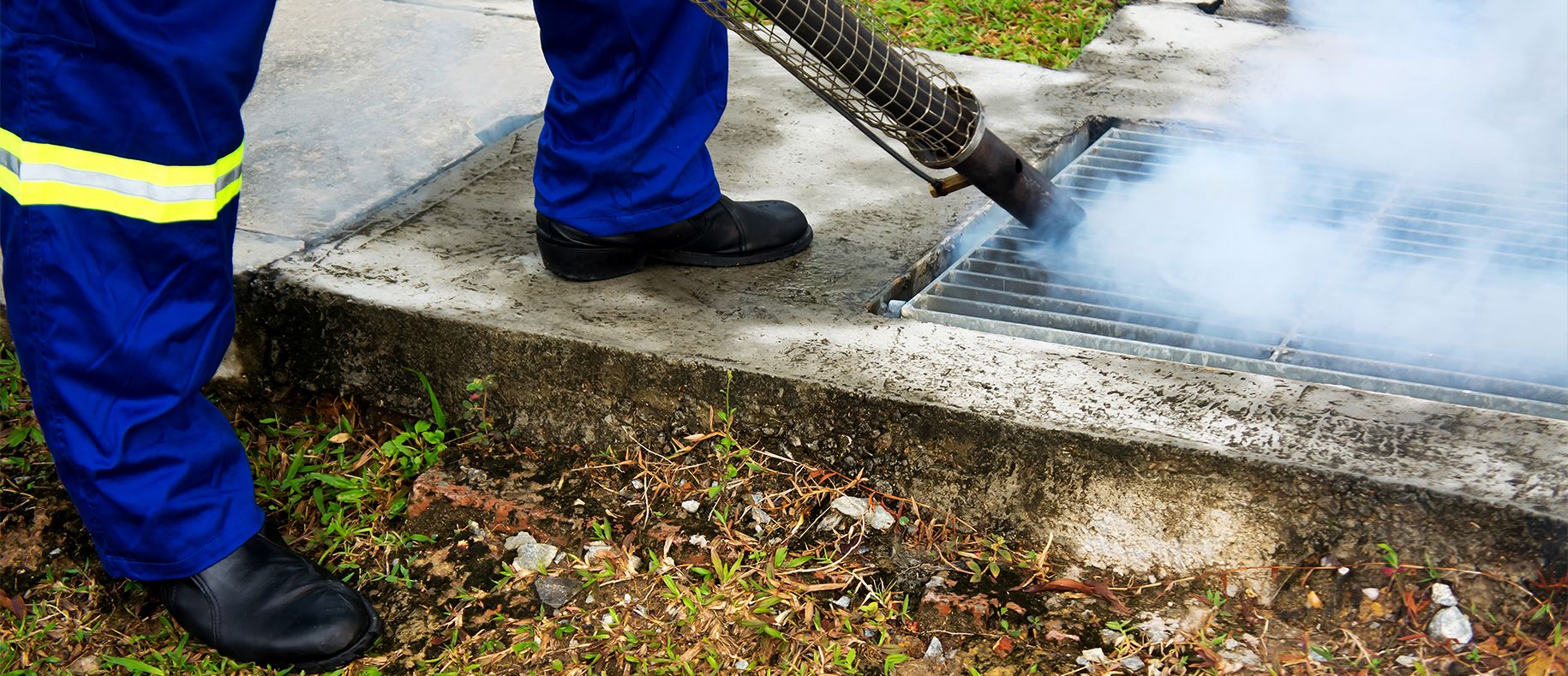
The “Ant-Proof” Kitchen Protocol
Daily Maintenance:
- Wipe all counters with disinfectant solution
- Clean stovetop and backsplash (grease attracts ants)
- Sweep floors thoroughly (focus on corners)
- Empty trash daily and clean receptacle weekly
- Transfer all pantry items to airtight containers
Weekly Deep-Clean:
- Behind appliances: Pull out refrigerator, stove, microwave
- Inside appliances: Clean crumb trays, microwave interior
- Cabinet corners: Vacuum and wipe down storage areas
- Sink drains: Flush with hot water and baking soda
Structural Exclusion: Sealing the Fortress
Ants can squeeze through gaps smaller than a credit card. Professional exclusion requires systematic sealing of all potential entry points.
Primary Entry Points:
- Install door sweeps on all exterior doors
- Replace damaged weather stripping
- Caulk gaps around window frames
- Seal utility penetrations with expanding foam
- Fill gaps around pipes and electrical outlets
Professional Sealing Materials:
- Hairline cracks: Silicone caulk
- 1/4 inch gaps: Expanding foam
- Larger openings: Steel wool + foam
- Moving parts: Weather stripping
Moisture Control: Eliminating the Second Attractant
Critical Moisture Sources:
- Fix leaky faucets immediately (even occasional drips)
- Improve bathroom ventilation
- Clean gutters regularly
- Install dehumidifiers in basements (keep below 50% humidity)
- Grade soil away from foundation
Treatment Timeline & Expectations
Understanding realistic timelines for ant elimination helps you choose the right method and avoid switching treatments prematurely.
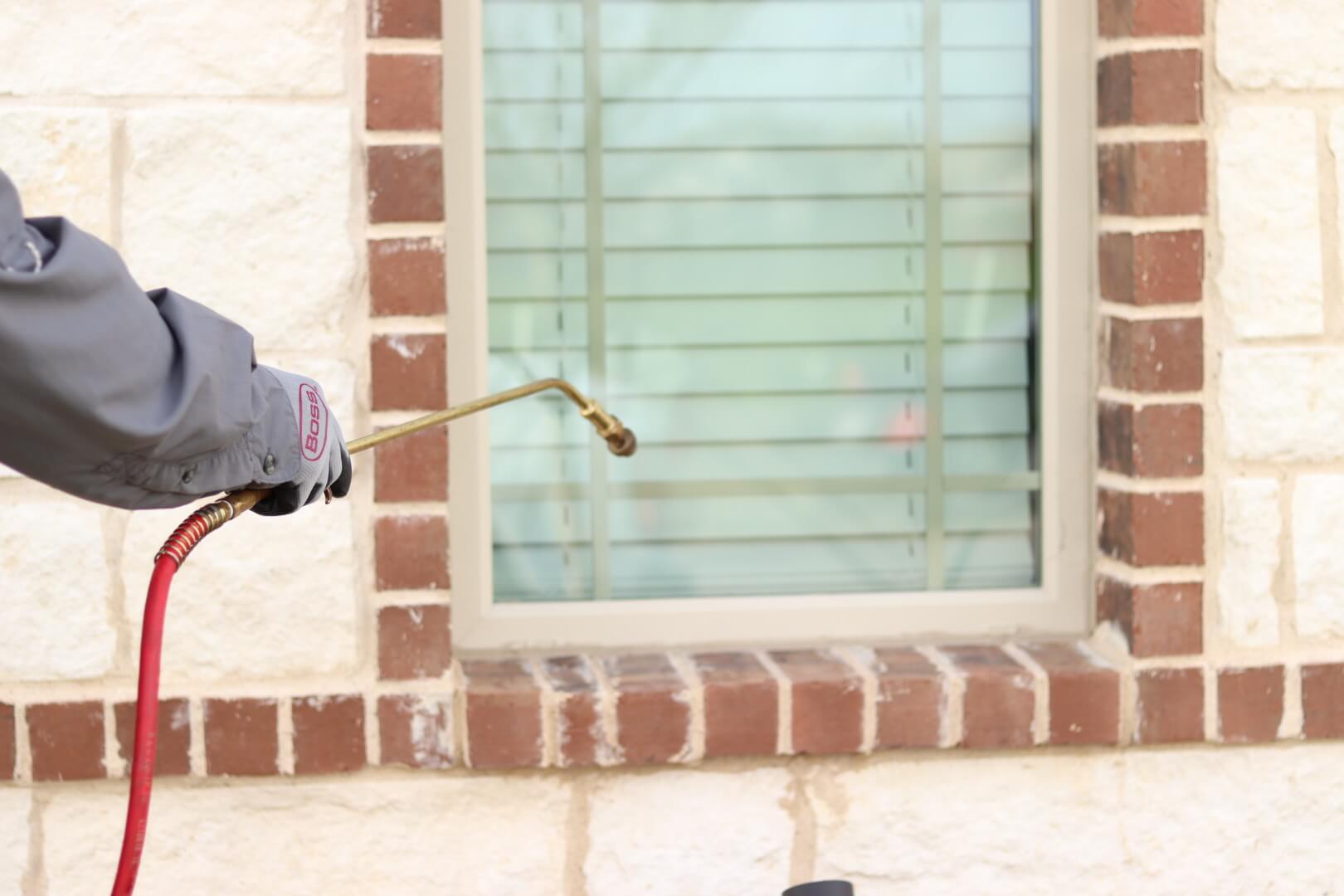
Professional Bait Treatment Timeline
Days 1-3: Initial Response
- What you’ll see: Often increased ant activity around bait stations
- Why this happens: Workers discover new food source
- What to do: Don’t panic – this indicates treatment is working
Days 4-7: Colony Impact Begins
- What you’ll see: Gradual reduction in trailing behavior
- Signs of success: Fewer ants on established trails
Days 8-14: Elimination Phase
- What you’ll see: Dramatic decrease in ant activity
- Expected outcome: 85-95% activity reduction
DIY Natural Method Timeline
Week 1: Setup and monitoring
Week 2-3: Variable results
Week 4+: Evaluation phase
Success indicators: Steadily decreasing activity
Decision point: If no improvement after 3 weeks, escalate to professional treatment
When to Call Clarity Pest Control
Red Flags That Require Our Professional Intervention
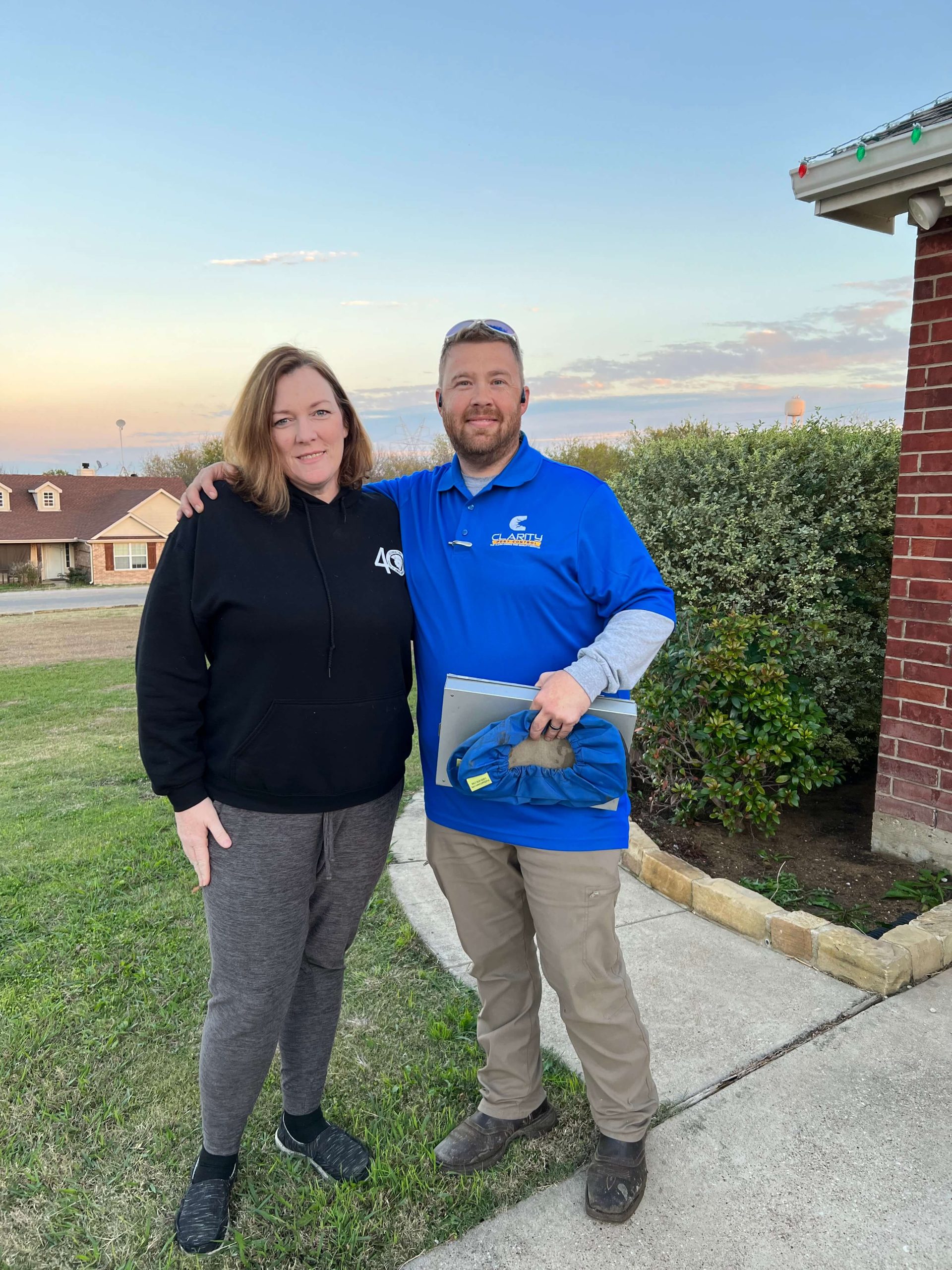
Call Clarity Pest Control Immediately If You Notice:
- Carpenter ant infestations (potential structural damage to your property)
- Multiple ant species present (requires specialized multi-approach treatment)
- Large outdoor colonies near your home foundation
- Recurring infestations despite multiple DIY attempts
- Ants appearing in multiple rooms simultaneously
- Wood damage or sawdust around wooden structures
- Ant activity increasing after initial DIY treatment
What Clarity Pest Control Provides
| Service Aspect | DIY Approach | Clarity Pest Control |
| Success Rate | 30-50% | 95%+ guaranteed |
| Timeline | 4-12 weeks | 1-3 weeks |
| Product Access | Consumer-grade only | Professional formulations |
| Species Expertise | General information | Licensed specialist knowledge |
| Guarantee | None | Written warranty included |
| Follow-up | Self-managed | Professional monitoring |
| Emergency Service | Not available | Same-day response |
Our Local Expertise Advantage
Clarity Pest Control understands the specific ant challenges in our service area:
- Regional ant species and their seasonal behavior patterns
- Local climate factors that influence ant activity
- Common structural vulnerabilities in area homes
- Proven treatment protocols for local ant populations
- Established relationships with satisfied customers in your neighborhood
Ready for Guaranteed Ant Elimination?
Clarity Pest Control provides comprehensive ant elimination with written warranties and same-day service.
FAQs
How long does it take to permanently get rid of ants?
With proper colony-targeting methods, expect 7-14 days for professional treatment or 2-4 weeks for effective DIY methods.
Will ants come back after professional treatment?
Professional treatments typically provide 6-12 months of protection. New infestations usually indicate new colonies, not treatment failure.
Are natural methods as effective as chemicals?
Natural methods can work for smaller infestations but require longer timelines. Professional products provide faster, more reliable results.
Can I use multiple ant control methods simultaneously?
Avoid mixing repellent sprays with baits. Use targeted baiting first, then repellent barriers after colony elimination.
What's the difference between sugar ants and carpenter ants?
Sugar ants seek sweets and don’t damage structures. Carpenter ants are larger, can damage wood, and often indicate moisture problems.
Take Action for Permanent Ant Elimination
You’ve learned the truth about ant control: temporary fixes lead to endless frustration. Whether you’re dealing with a small kitchen invasion or a full-scale carpenter ant problem, the solution is clear – target the entire colony, not just the ants you see.
The bottom line: DIY methods can work for minor issues, but serious infestations require professional expertise. Don’t waste more time and money on solutions that only provide temporary relief.
Ready to eliminate your ant problem permanently? Clarity Pest Control has helped hundreds of homeowners in our area achieve lasting results. We know exactly what species you’re dealing with and how to eliminate them for good.
Get your ant-free home back!
Call us today at 469-260-6337
Email : chris@claritypest.com
Sources
- U.S. Environmental Protection Agency (EPA) – Ants and Schools IPM Guidelines URL: https://www.epa.gov/ipm/ants-and-schools EPA’s official integrated pest management guidelines specifically for ant control, covering ant identification, baiting strategies, and least-toxic control methods for residential and institutional settings.
- Pennsylvania State University Extension – Got Ants? Eliminate Them with IPM URL: https://extension.psu.edu/got-ants-eliminate-them-with-ipm Penn State Extension’s research-based guide on ant species identification, prevention methods, and safe elimination techniques including borax baits, exclusion strategies, and when to use professional services.
- University of California IPM Program – Ants Management Guidelines URL: https://ipm.ucanr.edu/PMG/PESTNOTES/pn7411.html UC’s comprehensive scientific guide to ant biology, species identification, colony-targeting baits, and integrated management approaches based on decades of entomological research.
- Texas A&M AgriLife Extension – IPM Action Plan for Carpenter Ants URL: https://schoolipm.tamu.edu/forms/pest-management-plans/ipm-action-plan-for-carpenter-ants/ Texas A&M’s detailed carpenter ant management protocol covering identification, structural damage assessment, moisture control, and professional-grade baiting strategies for permanent elimination.
5. Extension.org Ant Pests Community – Integrated Pest Management for Ants URL: https://ant-pests.extension.org/integrated-pest-management-for-ants/ Multi-university collaborative resource providing evidence-based ant control methods, species-specific
